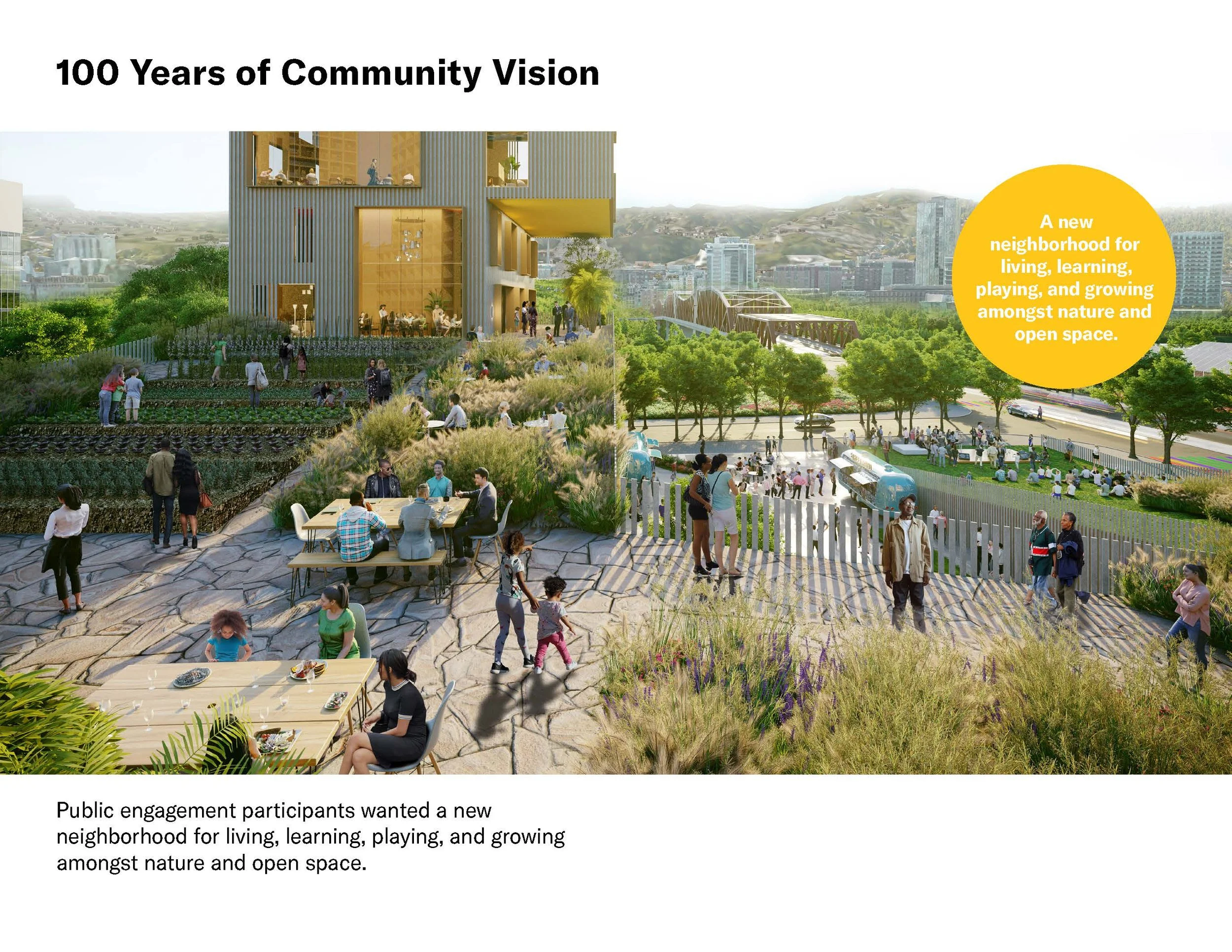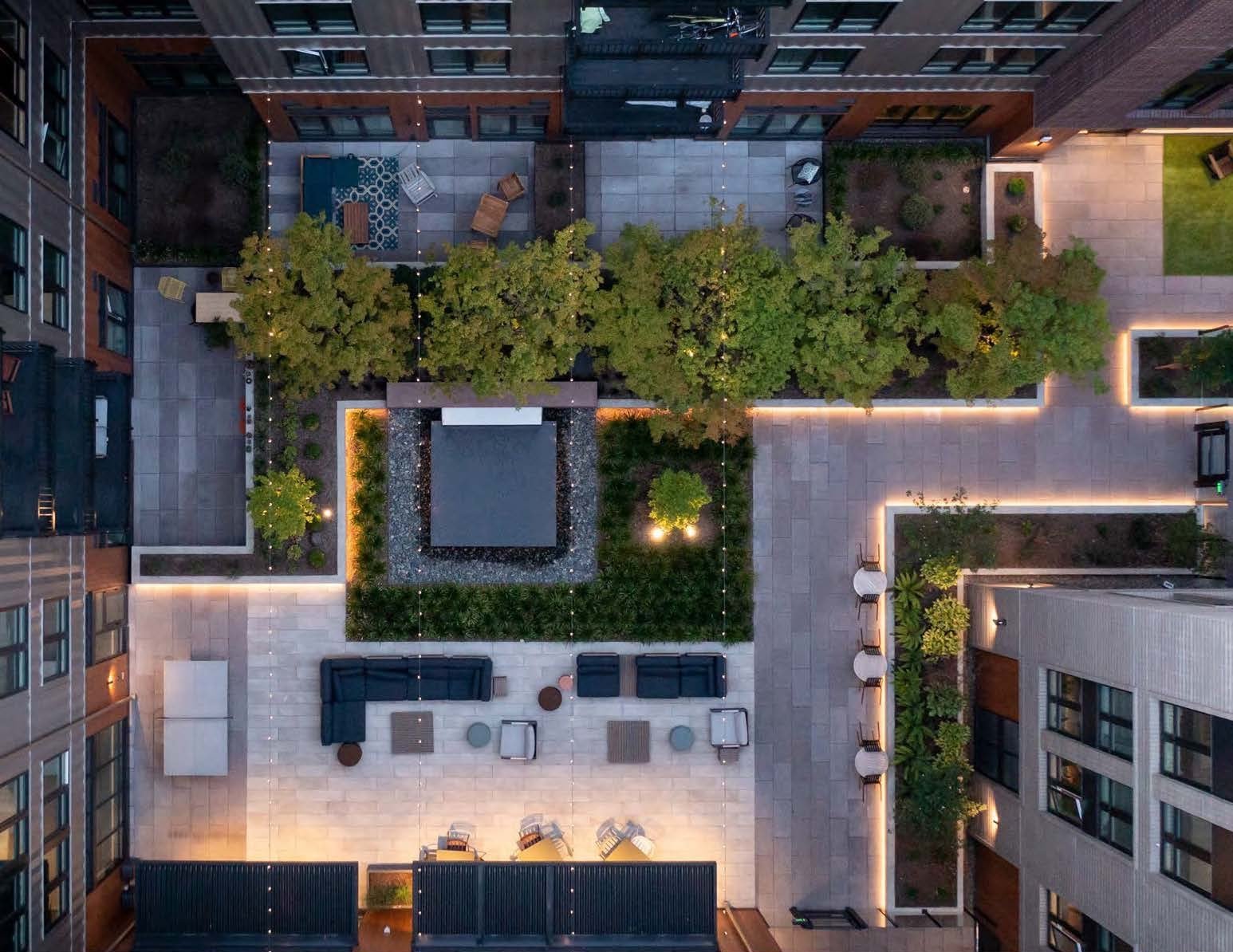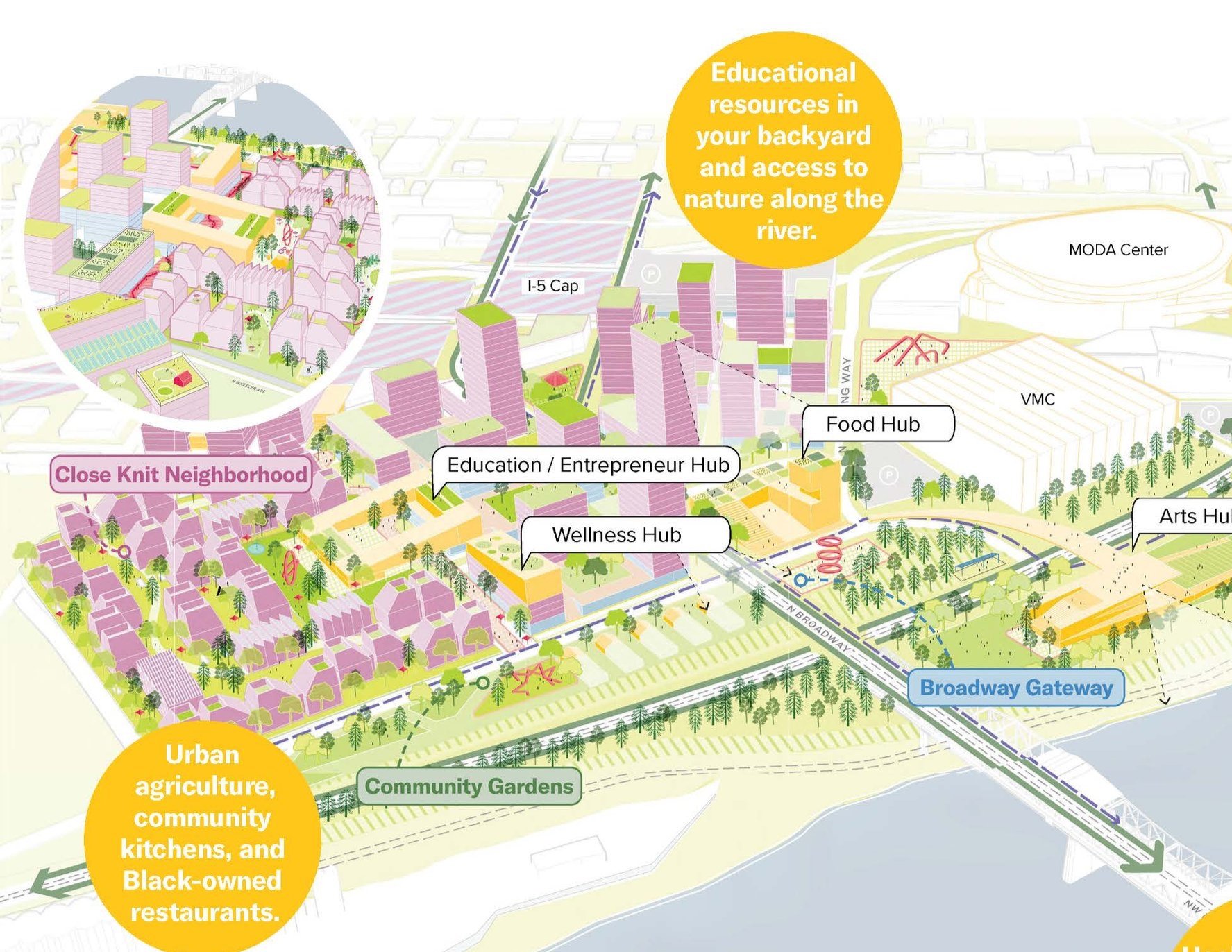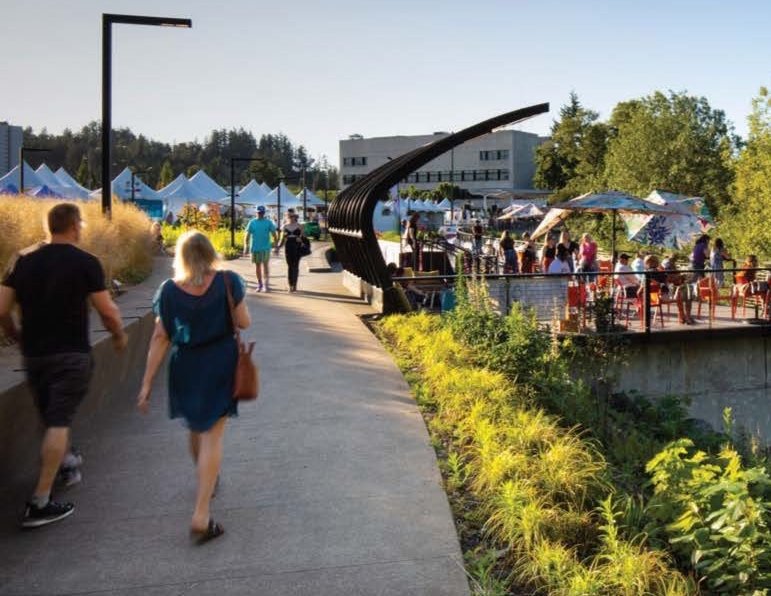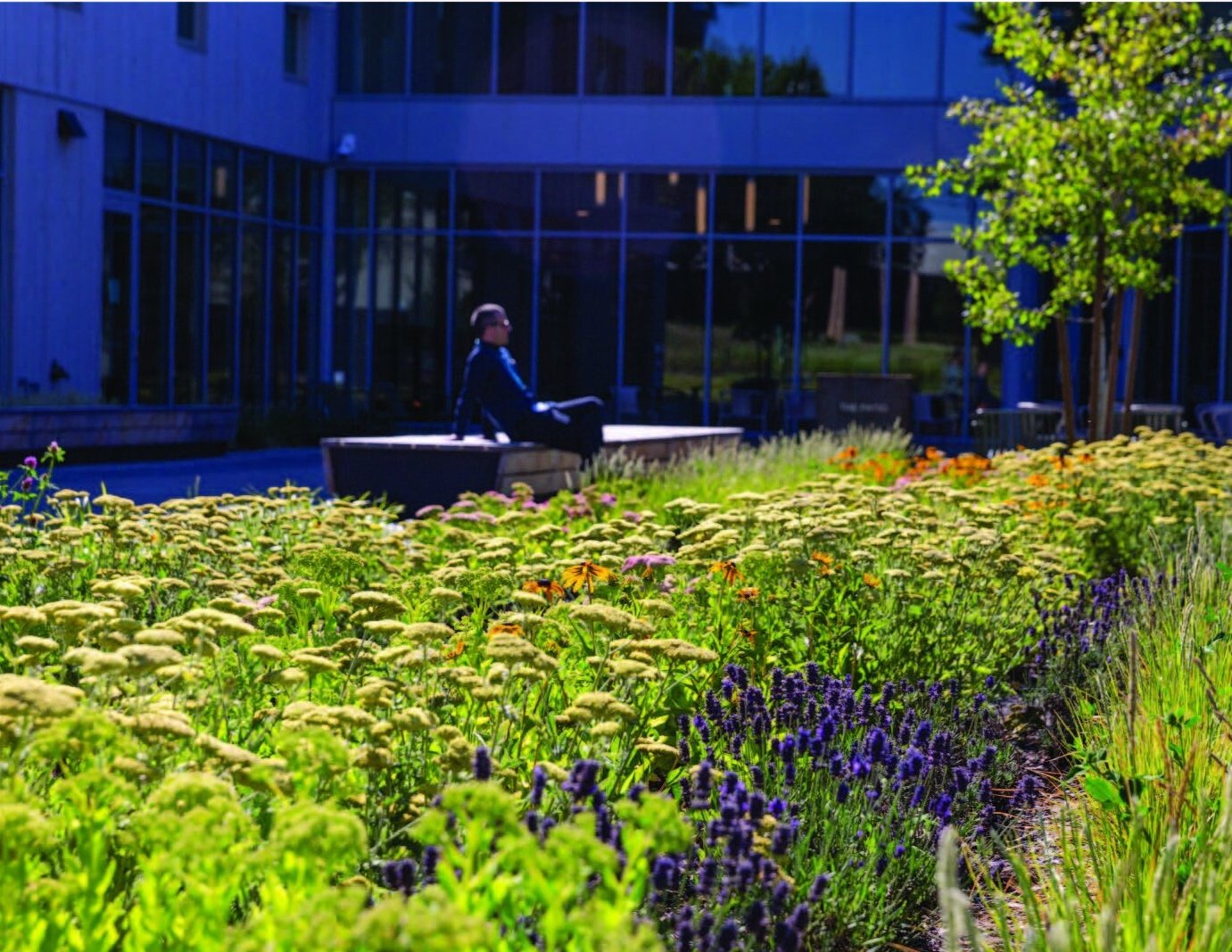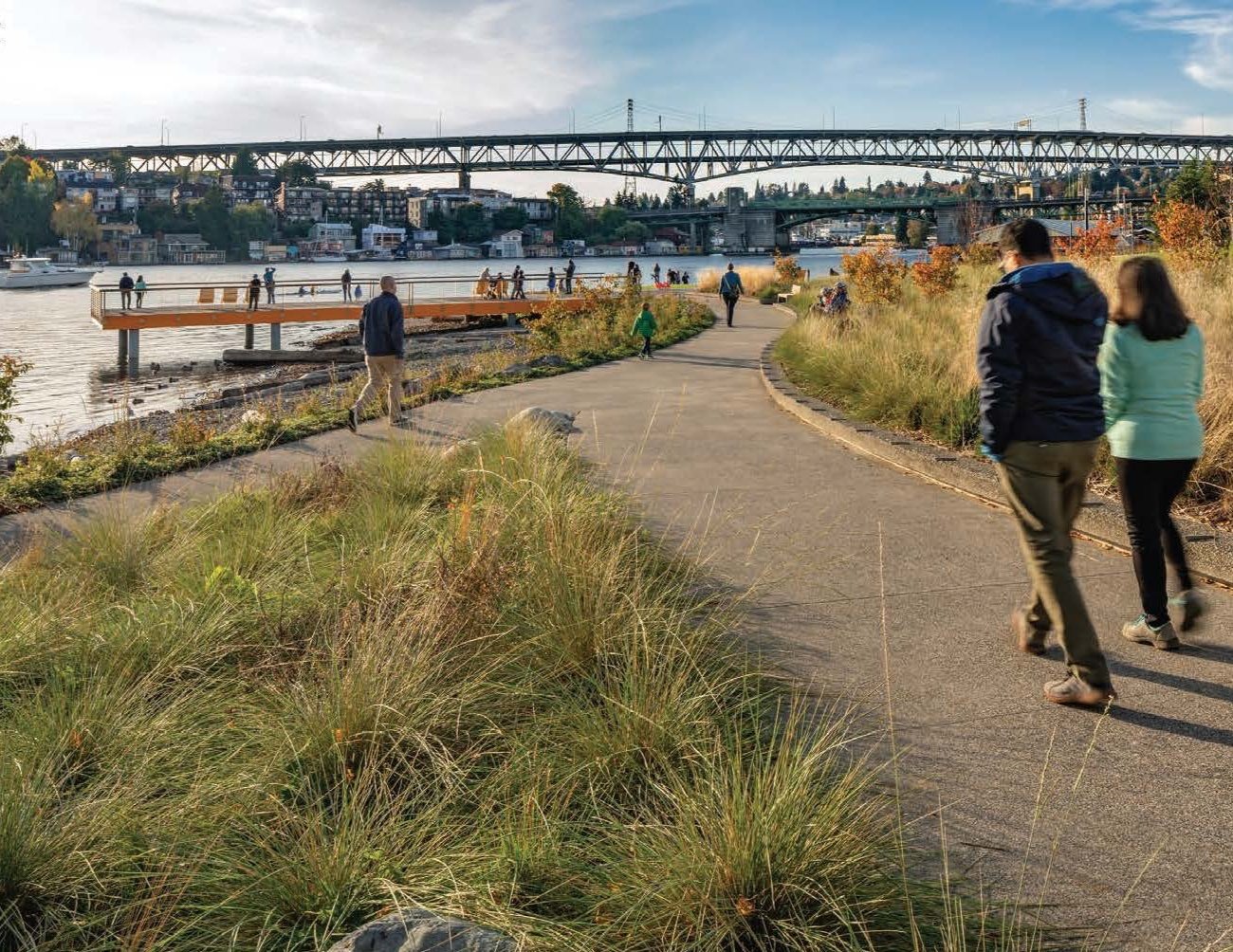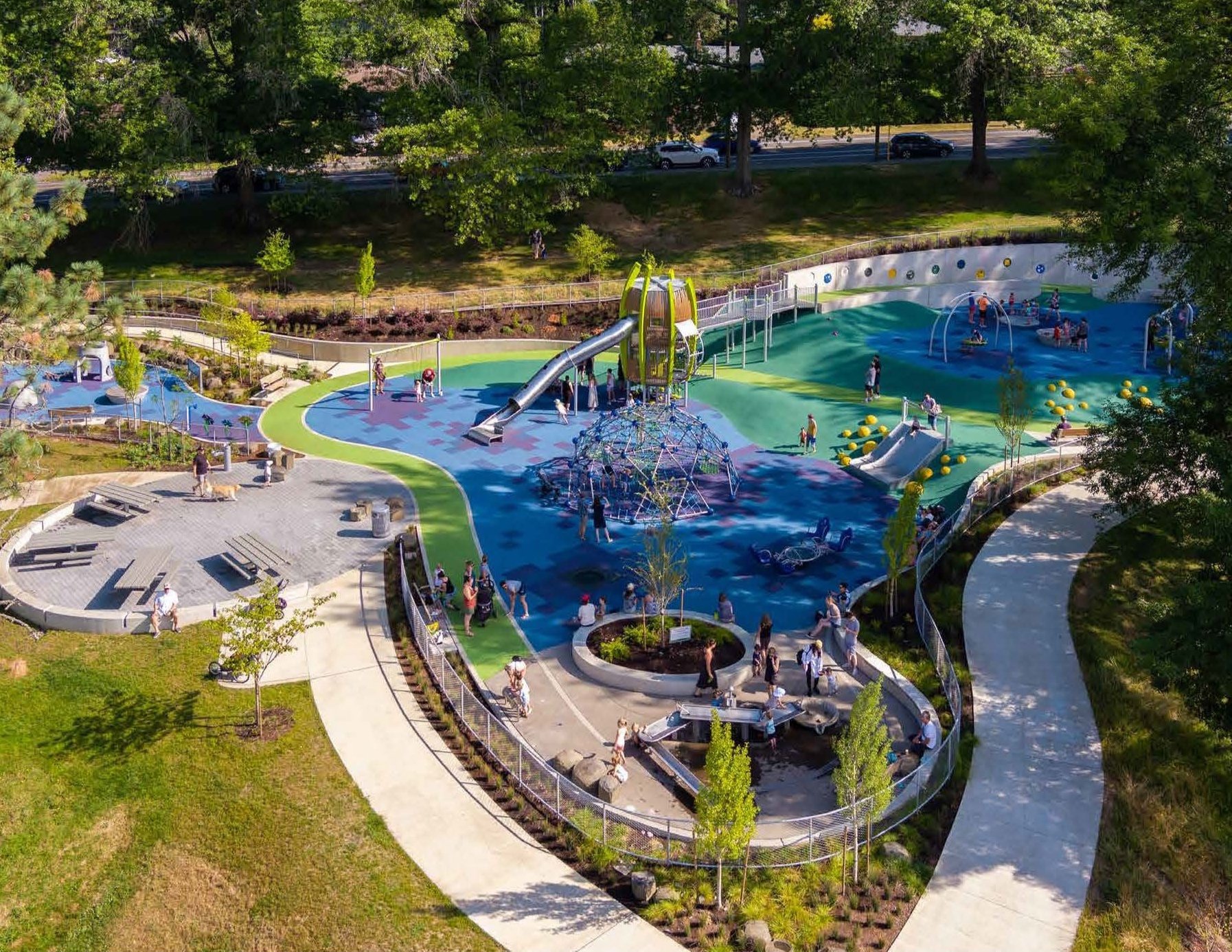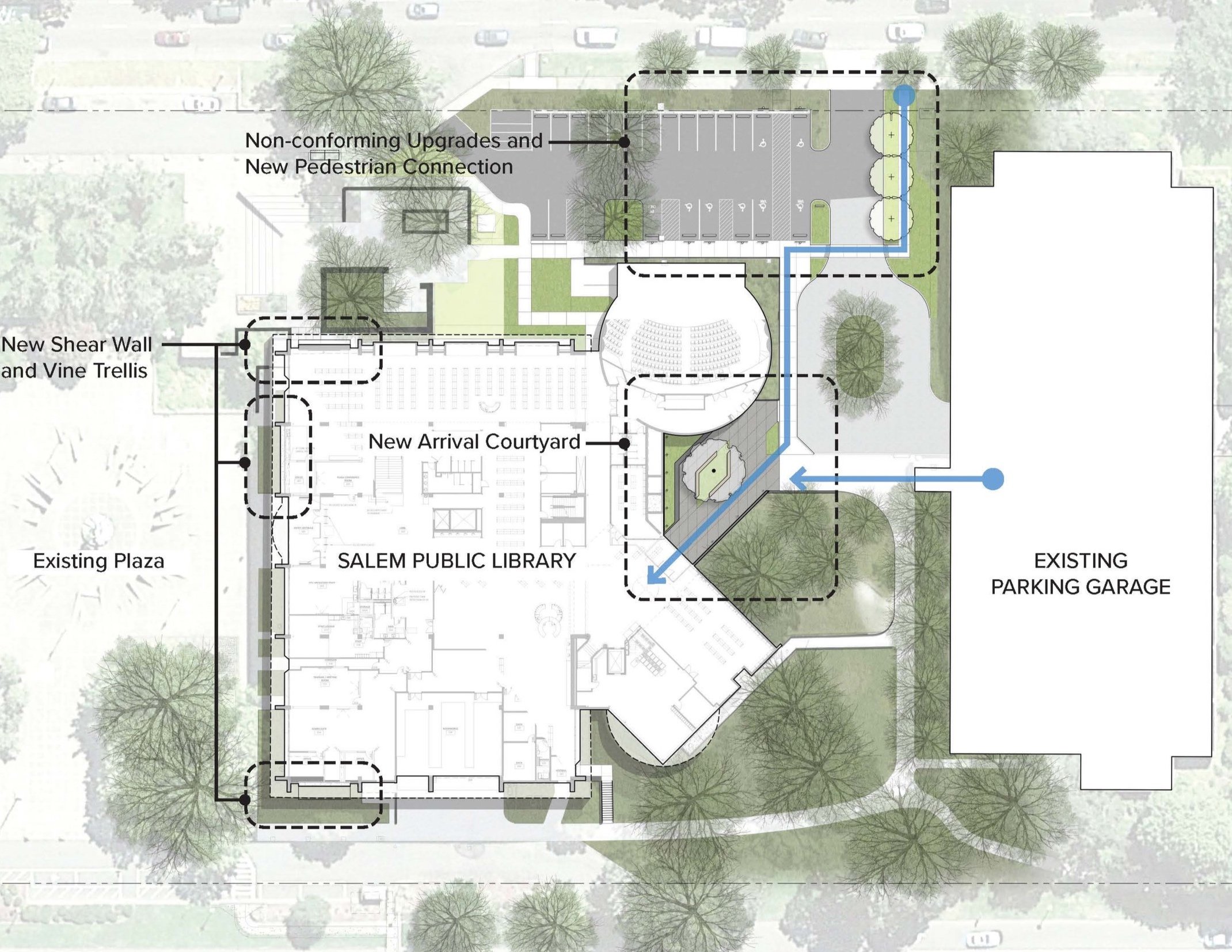What is Landscape Architecture?
Landscape architecture involves the planning, design, management, and nurturing of the built and natural environments. With their unique skill set, landscape architects work to improve human and environmental health in all communities. They plan and design parks, campuses, streetscapes, trails, plazas, residences, and other projects that strengthen communities.
Landscape architecture work is vast and varied, and includes the design of everything outside your door. The scope of work is diverse in form and scale, from residential design to wilderness management. Types of projects include public parks, plazas, streets and parkways, college campuses, trails and campgrounds, backyards, playgrounds, shopping centers, and environmental restoration, to name a few. The profession is multi-disciplinary, incorporating elements of natural and social sciences with the creative arts and design.
Landscape Architecture Is…
…stewardship of the land and the art of planning, design and management of natural and man-made elements thereon. A landscape architect combines expertise in design and the arts with knowledge of natural, social and behavioral sciences to create places where people live, work and play.
Landscape Architects Work…
…in a variety of settings including private offices, public agencies, colleges and universities. Although the focus of these practices may differ, the underlying processes of planning and design are used throughout.
Private Practice
The private practice of landscape architecture may vary considerably from office to office. Private firms generally offer services for projects that can range from regional planning and design of new communities to a planting plan for a small residential garden.
Private firms often work in consultant teams with architects, engineers, biologists, traffic consultants, planners, historians, and more, to provide process management, complete site analysis, planning and design services for the project.
Public Practice
Many landscape architects hold responsible positions in public or quasi-public agencies that have mandates or are concerned about protecting and managing public lands and natural resources. Landscape architects in the public realm may be found working as members of planning or park departments, site plan review commissions, or environmental protection agencies.
Academic Practice
Landscape architects serve as educators and researchers within the academic environment. New skills and viewpoints are constantly being developed in the context of rigorous application and adherence to national accreditation standards. Research is conducted in many areas including environmental and community planning, urban design and computer applications to land use planning.
Tom McCall Waterfront Park, Portland
Landscape Architecture in Oregon
Landscape architecture is essential to Oregon in a number of ways. Landscape architects protect public health, safety and welfare through environmentally conscious planning and design. The work of landscape architecture protects and manages natural resources by planning land uses which respect natural systems and accommodate the needs of people. Landscape architects are registered by the State of Oregon to maintain a mandated level of professional responsibility and service. Below are examples of the types of work landscape architects are doing in Oregon.
Making Spaces
Site Design is a fundamental part of a landscape architects work. Site context, existing site conditions and history are incorporated with programmed site uses. The result of a sensitive site design is a special place that contributes both aesthetically and functionally to the surrounding community. Tom McCall Waterfront Park in Portland showcases many award winning spaces designed by Oregon landscape architects.
Changing Faces
Landscape architects are involved in renovating or restoring sites to meet changing uses or repair degraded sites. Site planning and design at Multnomah Falls was implemented to upgrade visitor facilities at Oregon’s most popular day-us recreation site. Oregon parks are being renovated through the design efforts of both public and private practice landscape architects.
Going Places
Landscape architects are involved in the planning and design of transportation nodes and corridors for both utilitarian and recreational purposes. Innovative ideas such as the Forty-Mile Loop Trail in Portland were initiated by early landscape architects and then implemented by successive generations. Current projects involving light rail and it’s associated transit-oriented development are being planned and designed by landscape architects and allied professionals.
Leaving No Traces
Landscape architects have a serious goal and a proud tradition of stewardship. The preservation of outstanding resources in their pristine state has made Oregon a national jewel. Landscape architects have been instrumental in acts of foresight such as creating Forest Park in Portland, campaigning for the Columbia Gorge National Scenic Area, and establishing the Willamette River Greenway.
Climate Action
Landscape architects plan and design with nature to help all communities reduce greenhouse gas emissions and adapt to a changing climate. Landscape architects use climate positive design approaches that transform parks and open spaces into natural carbon sinks. They develop resilient nature-based solutions that reduce the impacts of extreme heat; coastal, ground, and inland flooding; sea level rise; pollution; and wildfires. They also increase biodiversity and protect and restore ecosystems, which underpin life on Earth.
Use the button below to search for a landscape architect in your area.
Find a Landscape Architect
To practice Landscape Architecture in Oregon, one must be registered with the Oregon State Landscape Architect Board (OSLAB), which regulates the profession. Landscape architecture is essential to Oregon in a number of ways. Landscape architects protect public health, safety and welfare through environmentally conscious planning and design. The work of landscape architecture protects and manages natural resources by planning land uses which respect natural systems and accommodate the needs of people. Landscape architects are registered by the State of Oregon to maintain a mandated level of professional responsibility and service.

